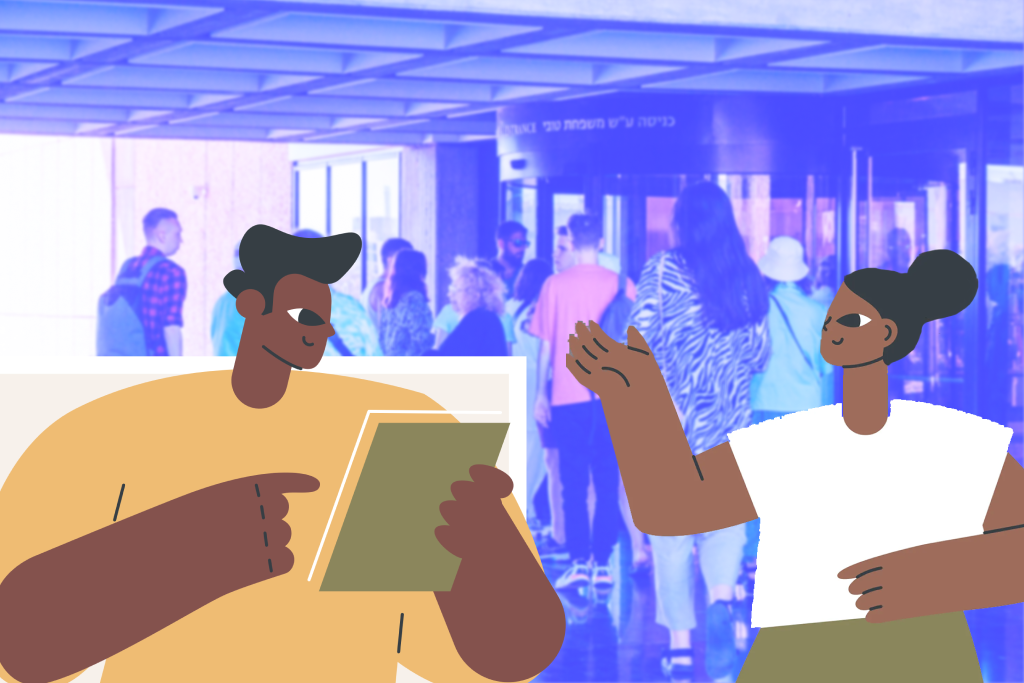You’re known for your ability to pull together a fabulous event. However, you’re always striving for improvement. How can you personalize these experiences in a way that enhances attendee engagement, helping guests get the most from their seminar or retreat?
Today’s audiences grew up with algorithms that predicted their preferences to show them what they wanted to see. While mathematical calculations do the work in the digital world, the real one requires human finesse. What tips and tricks should you consider when working your magic? Here’s how to create personalized event experiences that enhance employee engagement.
Why Personalize?
Ever since the internet’s invention, marketers have recognized its potential for personalizing offerings and its relevance to advertising. Tools like social media analyze your preferences through the content you engage in to show you products that might fit your needs. However, this shifted reality has increased expectations for offline interactions as well because people haven’t changed — they still like to feel seen and heard.
Small details like spelling attendee’s names correctly on their name tag matter more than ever. They produce value for your clients, as your job is to provide a morale-boosting experience that improves their bottom line. Companies with high morale have a 47% higher value than their counterparts and enjoy 20% better performance.
Therefore, your goal is to exceed expectations, treating your client’s staff like your own. That requires doing your homework to find out what participants want. Some demands are universal, although you’ll need to don your detective hat for others.
9 Ways to Personalize Your Event Experience, Enhance Engagement and Make It Sparkle
Your first order of business is finding out what people want. Your second is meshing the desired experience to enhance engagement with what their employer hopes they’ll get out of the seminar, conference or retreat. Here’s how to orchestrate it all so it comes off like a well-composed symphony.
.jpeg)
1. Survey Says
You don’t have the benefit of algorithms to tell you what type of content most actively engages your attendees. However, you probably have a guest list. Coordinate with your client to survey those invited on several crucial topics.
The first question to ask concerns food. Event planners should ask if any attendees have allergies and give them a chance to tell you about their needs. Doing so isn’t only responsible — it can significantly ease the discomfort of those with special dietary requirements and make them feel included, boosting morale. For longer conferences spanning several days, you must also inquire about lodging accommodations for people with disabilities.
Second, coordinate with your client. Ask them about the attendees. Are they a younger, more energetic group or sober, suit-wearing banker types? What kind of team-building activities have they found successful and what hasn’t been as effective? The more you can find out, the better. If you have time and your client agrees, consider visiting their workplace to get a sense of their flow and vibe.
The survey responses will also inform decisions you make for future events.
2. Break the Ice
Most people think of icebreakers as the formal set of introductions you go through at the beginning of a meeting. However, there are two stages. The first occurs before the event starts, as attendees enter the conference center and mingle with their colleagues while waiting for the emcee to take the mic.
Use this time to boost engagement through ice breakers. Make it pleasant by creating a game where attendees find their name tags or — better yet — design their own. Doing so is inclusive as it allows guests to indicate their preferred name, like if “Robert Smith'' might go by “Bob” or “Bobbi.” Include plenty of good coffee to revitalize those who have traveled a long way and healthy finger foods that keep allergens in mind — prepackaged snacks are great when they list each ingredient on the label.
Then, make the traditional icebreakers less boring by including some movement. For example, instead of going around the room calling on people, ask attendees to line up in alphabetical order by their middle name, which will determine who speaks first. Have them respond to a thought-provoking, open-ended question instead of simply stating their name. For example, “Describe your perfect dinner.”
3. Manage Attention Spans
Anyone who has worked in education knows that while attention spans may vary from learner to learner and between one activity and another in the same student, the lengthy lecture approach doesn’t work for most people. What’s true of youth echoes into adulthood, which is why TED Talks built their model around the 18-minute speech style to account for people’s ability to tune in and remain attentive.
Keep this in mind as you line up speakers. Remind each presenter of time constraints and coach them on best practices for adhering to these guidelines. Give breaks, or schedule alternating activities that get the audience moving between speakers to give their brains time to process what they’ve heard, and their bodies stretch and relax so they aren’t distracted by discomfort.
4. Keep It Moving
Sitting may not be the new smoking, but prolonged sedentary periods aren’t good for anyone’s health. They’re equally lousy for morale.
People were made for movement, so include time for plenty when personalizing events. Lay out your conference room with various stations, allowing attendees to circulate between them, or linger a few extra minutes to discuss topics they don’t fully understand and get hands-on experience in testing new devices.
Use the outdoors, too. While you must make accommodations for those with mobility issues, walking meetings have become popular for a good reason. The fresh air and mild exercise stimulate blood flow to the brain, facilitating ideas and guiding conversations. Such environments also decrease stress and anxiety, which may encourage more timid participants to speak up.
.jpeg)
5. Small Group Instruction
Likewise, remaining in large groups all day doesn’t provide space for anyone but the most confident to participate and get their questions answered. The most personalized event experiences enhance attendee engagement by including plenty of time for smaller breakout sessions.
Groups of three or four encourage everyone to speak up and share their ideas. Furthermore, it’s easier to share with the larger group when the ideas you present represent the thoughts of three or four people — you aren’t putting your hand up alone but delivering a report.
6. Honor Dietary Preferences
Hunger can distract you. Although your only legal requirement is to ask about food allergies and take the appropriate precautions, horror stories abound of participants at such events going hungry because they couldn’t find anything suitable to eat. Even the vending machine only held unhealthy snacks, leaving slim pickings for folks who preferred not to indulge in a complimentary danish or salty bag of chips.
Don’t be guilty of making your “vegan option” consist of a plate of iceberg lettuce with a few sad shreds of carrot thrown in for color. Use these tips to ensure all attendees aren’t distracted by hunger:
- Think whole foods: Consider simple snacks such as fresh fruit, cheese sticks, packets of nuts and granola with the ingredients listed, and veggies with dip. When people can tell what’s in a dish with ease, they’re better able to avoid allergens and ingredients they don’t like.
- Balance health with fun: Many conferences offer coffee, donuts and danishes, but where does that leave folks who prefer to avoid sugar and processed baked goods? Include at least one healthy option, such as a fruit, granola and yogurt parfait. Source food from local sources for healthy and eco-friendly options.
- Clearly label and list ingredients: It’s a must for those with allergies but also shows consideration for people who might lack a formal diagnosis but don’t do well with certain ingredients.
- Look for double-duty foods: Seek dishes that cater to multiple dietary preferences and food restrictions at once. For example, the parfait mentioned above can quickly become vegan and gluten-free by opting for cashew yogurt and ensuring the oats in the granola come from a dedicated facility.
- Consider religious preferences: Offering Halal, Kosher and Jain options is a must to be inclusive of all your guests. Do proper research and consult professionals to choose the right options.
7. Be Mindful of the Sensory Experience
The physical environment can cause distracting sensory issues for some people. Some remain beyond your control, but you can adjust others. Choosing a venue that is accessible and comfortable is key.
For example, some conference centers have observed that pulsed fluorescent lights can trigger migraines, and replaced fixtures with LEDs that provide ample illumination without the harsh, blue tones or invisible pulsing. If yours hasn’t, alternatives such as floor and desk lamps can help. You might also include a friendly note in your invitations reminding guests of sensory issues. For example:
- The conference center temperature sits at a comfortable 72° Fahrenheit. However, those who may get chilly might wish to bring a sweater.
- Please refrain from wearing excess perfume or cologne out of consideration for guests with allergies.
- Please note that outside construction may produce distracting noises that exceed X decibels for guests with sensitive hearing.
If you want to go above and beyond, add little touches such as spare blankets for guests who may get cold or earplugs for those with noise sensitivities if there’s a construction crew ripping up the street outside.
%2520(1).jpeg)
8. Offer Virtual Options
While most events are back in person, virtual options still serve multiple purposes. Having a hybrid event has many benefits:
- Enhanced opportunities for networking: No matter how far in advance you set the date, some attendees will have other obligations that may prevent travel but permit virtual attendance. Having a virtual option will increase your attendance and maximize your ROI.
- Recording: Having a recording of your event will allow attendees to watch it back whenever they need to or use it to train future employees. This is also great if you have multiple sessions going on at the same time, so people can watch the sessions they missed.
- Inclusivity: Virtual options are a great way to be inclusive for people who have disabilities or weakened immune systems.
9. Invite the Spirit of Healthy Competition
What’s a personalized event without a bit of fun and games? Your client might already have ideas in mind for things they can play that enhance the learning they share with their teams while building morale and relieving stress. However, you can also suggest fun twists on the following classics to enhance attendee engagement at such events:
- Scattergories: Once you have the alphabet die, it’s easy to print off personalized answer sheets that tie in with the convention’s topic.
- Scavenger hunts: Maps of the conference center property come in handy for this activity.
- Trivia games: A whiteboard can keep score for multiple teams, breaking it down in a bracket, sports playoff-style.
Be sure to include fun prizes. Work with your client to brainstorm meaningful rewards, including anything from a gift basket to a room upgrade.
Crafting a Personalized Event Experience
As an event planner, your job is to wow your clients. Creating personalized experiences enhances attendee engagement, and helps employees get more out of seminars, conferences and retreats.
Use the above nine tips to delight your guests from beginning to end. Increasing attendee engagement means allowing everyone to contribute and learn, which improves team morale and produces enthusiasm for future events.


.jpg)




.png)





